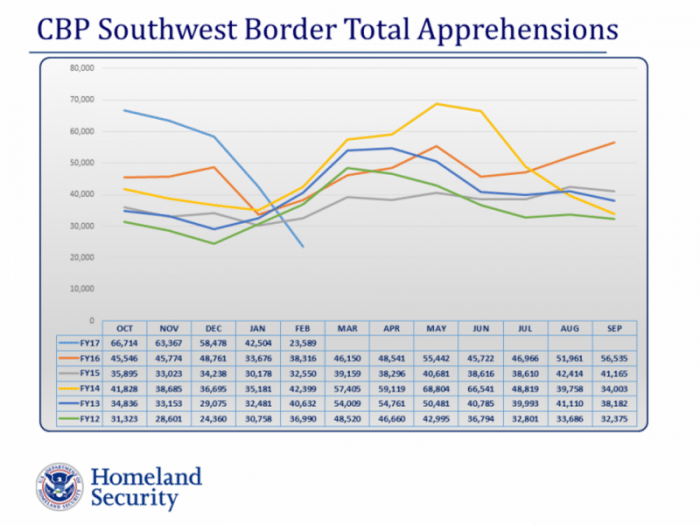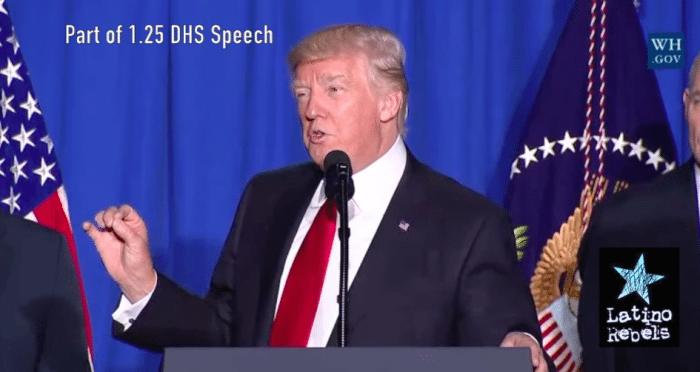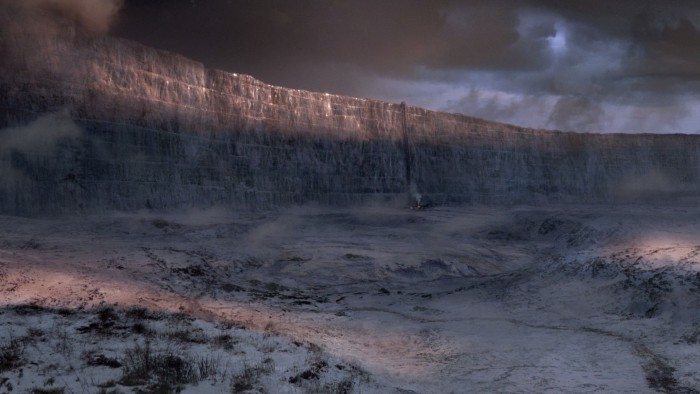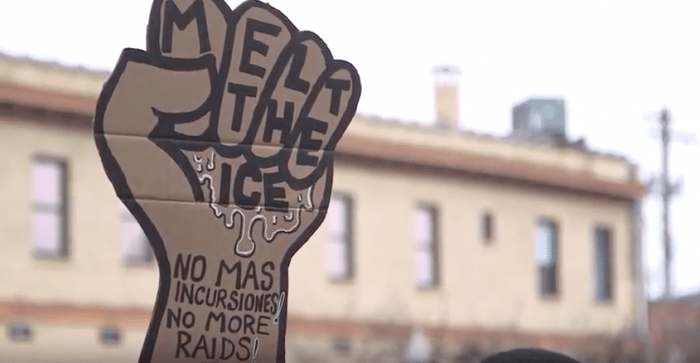President Donald Trump has been in office for almost two months, and already his administration has built on the immigration policies of the past, and installed new measures to turn hateful and xenophobic campaign rhetoric into actual domestic policy. Trump’s insistence on the creation of a barrier on the southern border with México and the designation of undocumented immigrants as petulant criminals has established a dangerous path.
Trump’s executive orders present visions of a future administration that aims at preventing prospective immigration through archaic measures, such as the proposed barrier, and detaining and deporting significant portions of the population, all for the sake of acquiring political capital.
It’s no surprise, if one considers the bombastic speeches he made on the campaign trail. What’s surprising is how Trump has seemingly shifted from talk to actual policy. With all the misinformation, it’s important to understand the scope of the orders, and to understand the consequences because the reality is, and at the risk of sounding hyperbolic, it’ll only get worse from here.
“Build That Wall!!!”
Trump’s campaign announcement occurred on June 16, 2015, and immediately showcased a candidacy of unabashed bigotry and racism. From the lobby of Trump Tower, the candidate uttered, perhaps his most controversial sound bite: “When Mexico sends their people, they’re not sending their best…They’re bringing drugs. They’re bringing crime. They’re rapists. And some, I assume, are good people.”
From here, it became clear that Trump’s campaign intended to pursue an anti-immigrant discourse. Trump’s administration has not disappointed.
An executive order titled “Border Security and Immigration Enforcement Improvements” was intended to protect the United States from unchecked immigration. These migrants (or “aliens,” as referenced in the order), “illegally enter the United States without inspection or admission,” and pose “a significant threat to national security and public safety.”
Specifically, in Section 4 of the order, President Trump laid out policy for the construction of a barrier on the southern border with México:
(a) In accordance with existing law, including the Secure Fence Act and IIRIRA, take all appropriate steps to immediately plan, design, and construct a physical wall along the southern border, using appropriate materials and technology to most effectively achieve complete operational control of the southern border;
(b) Identify and, to the extent permitted by law, allocate all sources of Federal funds for the planning, designing, and constructing of a physical wall along the southern border;
(c) Project and develop long-term funding requirements for the wall, including preparing Congressional budget requests for the current and upcoming fiscal years; and
(d) Produce a comprehensive study of the security of the southern border, to be completed within 180 days of this order, that shall include the current state of southern border security, all geophysical and topographical aspects of the southern border, the availability of Federal and State resources necessary to achieve complete operational control of the southern border, and a strategy to obtain and maintain complete operational control of the southern border.
John Kelly, Department of Homeland Security (DHS) Secretary, issued an implementation memo (one of two) on February 20, 2017 that highlighted how authorities within DHS, specifically Customs and Border Protection (CBP), were to commence planning on the construction of the proposed barrier:
Consistent with the President’s Executive Order, the will of Congress and the need to secure the border in the national interest, CBP, in consultation with the appropriate executive departments and agencies, and nongovernmental entities having relevant expertise-and using materials originating in the United States to the maximum extent permitted by law-shall immediately begin planning, design, construction and maintenance of a wall, including the attendant lighting, technology (including sensors), as well as patrol and access roads, along the land border with Mexico in accordance with existing law, in the most appropriate locations and utilizing appropriate materials and technology to most effectively achieve operational control of the border.
It has become a corporate enterprise, as DHS has already sought pitches for proposed designs by contractors willing to provide a cost-effective proposal for the proposed barrier:
The Dept. of Homeland Security, Customs and Border Protection (CBP) intends on issuing a solicitation in electronic format on or about March 6, 2017 for the design and build of several prototype wall structures in the vicinity of the United States border with Mexico. The procurement will be conducted in two phases, the first requiring vendors to submit a concept paper of their prototype(s) by March 10, 2017, which will result in the evaluation and down select of offerors by March 20, 2017. The second phase will require the down select of phase 1 offerors to submit proposals in response to the full RFP by March 24, 2017, which will include price. Multiple awards are contemplated by mid-April for this effort. An option for additional miles may be included in each contract award.
There’s an obsession with national security that has culminated with plans to construct a massive barrier on the southern border with Mexico. Reuters has revealed that the estimated cost of the proposed barrier has reached $21.6 billion, and requires a minimum of three-years of construction, according to an internal memo from the Department of Homeland Security.
As The New York Times reported, Trump has “directed federal agencies to use existing funds as a start to the wall, and formally called for the hiring of an additional 5,000 Border Patrol agents and 10,000 immigration officers.” With such proposed increases, an immense financial burden is expected, according to POLITICO:
If Trump adds 10,000 additional ICE agents, it could mean a further $3.9 billion each year. DHS requested $3.1 billion for roughly 8,000 enforcement and removal agents in fiscal year 2017. The addition of 5,000 Border Patrol agents would tack $900 million annually onto the bill, based on the $3.8 billion DHS requested for 21,070 agents in fiscal-year 2017.
All this is happening while Border Patrol reported a “dramatic drop” decrease in border crossings during February. Why do you need more agents if the numbers are already decreasing?


Yet, it’s time to build a $21 billion wall (wait, barrier)?
The financial burdens of the barrier avoided scrutiny as President Trump’s incendiary rhetoric has deflected major criticism. Much remains unanswered, such as payment for the barrier, and how the funds shall be allocated (either through congressional funding, or from Mexico).
Secretary Kelly has stated on Fox News that the barrier will be built in stages: “The wall will be built where it’s needed first, and then it will be filled in,” without offering concrete plans for the important financial commitments.
Speaker of the House Paul Ryan (R-WI) toured the U.S. Border Patrol station in McAllen, Texas (his first time, by the way) and that portion of the Rio Grande Valley to “examine the challenges of securing our border and learn more about the issues facing border communities.”
Ryan has showcased a proclivity to support Trump’s agenda. The trip to McAllen cemented this partisan backing. The barrier has largely been embraced by Republicans in Congress, with an insistence by Ryan that Congress will fund the construction of the barrier. The comings weeks will prove to be incredible theater, as the Trump administration has just discovered that only $20 million exists in available funds to erect such an extensive barrier. Time will tell how “progress” will impact Trump’s obsession, however, with a Republican dominated political system, filled to the brim with aging, misguided politicians, it does not look especially bright.
Deportation Force
At a February 19 rally in Melbourne, Florida, President Trump highlighted a vision of a deportation apparatus that prioritized the removal of “dangerous criminals.”
The gang members — bad, bad people. I said it Day 1. And they’re going out, or they’re being put in prison. But for the most part, get them the hell out of here. Bring them back to where they came from.
From the self-proclaimed, non-partisan Migration Policy Institute, an analysis of data collected by DHS on the undocumented population found that “820,000 of the 11 million people living in the country illegally had criminal convictions…of these… 300,000 had a felony conviction and 390,000 were criminal misdemeanants.”
The priority, of course, was expressed through executive fiat, “Enhancing Public Safety in the Interior of the United States,” that shifted focus to so-called “removable” and “criminal aliens.” Trump’s order has directed DHS Secretary Kelly to prioritize the removal of undocumented immigrants based on these guidelines (Sec. 5):
(a) Have been convicted of any criminal offense;
(b) Have been charged with any criminal offense, where such charge has not been resolved;
(c) Have committed acts that constitute a chargeable criminal offense;
(d) Have engaged in fraud or willful misrepresentation in connection with any official matter or application before a governmental agency;
(e) Have abused any program related to receipt of public benefits;
(f) Are subject to a final order of removal, but who have not complied with their legal obligation to depart the United States; or
(g) In the judgment of an immigration officer, otherwise pose a risk to public safety or national security.
So who becomes eligible for deportation under this order? Not just “criminal aliens,” convicted of heinous crimes, as Trump’s rhetoric suggests, but those convicted of minor crimes (i.e., speeding tickets) and those merely suspected of them.
Acts that might “constitute a chargeable criminal offense” justify deportation in the Trump administration. Memos released by DHS on February 20 showcased a path toward an extensive deportation apparatus that follows such a path:
The primary enforcement capabilities (i.e., law enforcement) were discussed, as resources were to be allocated primarily for additional agents (see; Border Security and Immigration Enforcement):
Accordingly, the Commissioner of CBP shall –while ensuring consistency in training and standards– immediately begin the process of hiring 5,000 additional Border Patrol agents, as well as 500 Air & Marine Agents/Officers, subject to the availability of resources, and take all actions necessary to ensure that such agents/officers enter on duty and are assigned to appropriate duty stations, including providing for the attendant resources and additional personnel necessary to support such agents, as soon as practicable.
It goes beyond the border. The deportation of unauthorized or undocumented immigrants warranted the expansion of provisions of the Immigration and Nationality Act, specifically the 287 (g) provision, that delegates power to local and state authorities, as explained below:
Section 287(g) of the INA authorizes me to enter into a written agreement with a state or political subdivision thereof, for the purpose of authorizing qualified officers or employees of the state or subdivision to perform the functions of an immigration officer in relation to the investigation, apprehension, or detention of aliens in the United States. This grant of authority, known as the 287(g) Program, has been a highly successful force multiplier that authorizes state or local law enforcement personnel to perform all law enforcement functions specified in section 287(a) of the INA, including the authority to investigate, identify, apprehend, arrest, detain, transport and conduct searches of an alien for the purposes of enforcing the immigration laws.
The expansion of the 287 (g) program, as expressed in Section 8 of Trump’s executive order “Enhancing Public Safety,” grants a worrying amount of power to the program, and to Secretary Kelly and DHS, parties who negotiate such contracts:
(a) In furtherance of this policy, the Secretary shall immediately take appropriate action to engage with the Governors of the States, as well as local officials, for the purpose of preparing to enter into agreements under section 287(g) of the INA (8 U.S.C. 1357(g)).
(b) To the extent permitted by law and with the consent of State or local officials, as appropriate, the Secretary shall take appropriate action, through agreements under section 287(g) of the INA, or otherwise, to authorize State and local law enforcement officials, as the Secretary determines are qualified and appropriate, to perform the functions of immigration officers in relation to the investigation, apprehension, or detention of aliens in the United States under the direction and the
supervision of the Secretary. Such authorization shall be in addition to, rather than in place of, Federal performance of these duties.
(c) To the extent permitted by law, the Secretary may structure each agreement under section 287(g) of the INA in a manner that provides the most effective model for enforcing Federal immigration laws for that jurisdiction.
The 287 (g) program is not new. It was created with the passing of the Illegal Immigration Reform and Immigrant Responsibility Act of 1996. However, Trump’s recent executive orders do not provide a hopeful vision for the future. As Amanda Sakuma writes in The Atlantic, Trump’s typical conservative fetish for “law and order” has led to an increased tendency to delegate authority to local and state officials for the purpose of “interview[ing], arrest[ing], and detain[ing] any person who may be in violation of immigration laws.”
It has led to increased partnership to house those undocumented immigrants detained by Immigration and Customs Enforcement (ICE) and/or local and state authorities. As Sakuma states:
The federal government has long relied on partnerships with local jails to cut down on transportation costs and shore up detention space in remote regions. It’s an economic boom for cash-strapped municipalities that are paid out at a daily rate to house immigrants for indefinite periods…
Incentives allow for the 287 (g) program to maintain an extended presence. The promise of economic stimulus through the detention of undocumented immigrants and the possibilities of extended political capital in conservative enclaves through the detention and deportation of these immigrants will allow for the continued presence of such maneuvers.
The Power of Raids Under Trump
ICE is responsible for the enforcement of immigration and customs law in the United States The most provocative and politically charged application for enforcement?
These “raids” target suspected unauthorized and undocumented immigrants based on criteria determined by presidential administrations. Trump’s focus, as the Times reported, has been “to publicize crimes by undocumented immigrants; strip such immigrants of privacy protections; enlist local police officers as enforcers; erect new detention facilities; discourage asylum seekers; and, ultimately, speed up deportations.”
Reports of immigration raids appeared as early as February. Meanwhile, Trump has marveled at the efficiency of the federal agencies at his disposal, touting the recent raids by ICE as an effective “military operation.” As referenced by Julianne Hing from The Nation, the only way to ensure the success of a deportation apparatus, is to “turn a person’s very existence into a crime;” and broad interpretations of immigration law allow for a wide-ranging removal process. It is plain, Trump’s reference of the raids as a “military operation” has criminalized all undocumented immigrants:
And it’s a military operation because what has been allowed to come into our country, when you see gang violence that you’ve read about like never before and all of the things—much of that is people who are here illegally.
Trump has forgotten, or more likely dismissed the fact, that his words carry gravitas, especially among the communities he has slated for possible removal.
The crackdown has created fear in communities where undocumented immigrants constitute a significant amount of the population. Immigration advocates, as expressed by Ian Gordon for Mother Jones, do not trust that “criminal aliens” compose the entirety of Trump’s priorities for removal:
Despite assurances from Immigration and Customs Enforcement (ICE) that its high-profile deportation raids last week focused on serious criminals, agents also inquired about the immigration status of other people in the general vicinity — and detained those who were undocumented.
ICE has been granted broad authority to pursue such provocative enforcement of immigration and customs law. Further, as detailed in an agency press release, ICE has reserved the right to arrest those suspected of being in violation of federal immigration law:
During targeted enforcement operations ICE officers frequently encounter additional suspects who may be in the United States in violation of federal immigration laws. Those persons will be evaluated on a case by case basis and, when appropriate, arrested by ICE.
It appears that ICE has no fixed priority on “criminal aliens” as originally thought. Those simply suspected of being undocumented draw the same attention. The new focus created a blueprint for Trump’s deportation machine, as discussed briefly earlier, where “chargeable offenses” that warrant deportation include driving without a driver’s license.
Fear is rampant among the undocumented, while Trump and his immigration policies are questionable and perhaps unconstitutional. Ryan Devereaux of The Intercept writes of the horrifying possibilities that may arise should Trump’s vision for “expedited removal” become reality. The prospects as presented seem scary enough, coupled with the lack of transparency within federal immigration agencies, according to The Boston Globe.
It becomes alarming.
No Turning Back
Trump’s administration offer frightening possibilities. The unwarranted obsession with the construction of a barrier has eroded, or has begun to erode, diplomatic relations with a strategic ally and economic partner. However, that does not matter to President Trump, since he continues to please a conservative base hell-bent on demolishing “the establishment” and not placate to the needs of perceived “non-Americans.”
This has extended to the continuance of a deportation apparatus established by administrations prior, one that is taking on new dimensions with the Trump administration. The future does not look bright as ICE and other federal immigration agencies receive more power to arrest, detain and deport those undocumented individuals left behind in a system created for the sole purpose of leaving them behind.
It’s a dangerous path to venture down, the alienation of a population so instrumental to the political and socioeconomic underpinnings of the United States.
Once an administration has decided to tread down that path, it’s impossible to turn back. A month and a half into Trump’s presidency, we’re stuck and there’s no turning back.
***
Nathaniel Santos Hernández is a graduate of the University of Maine, Orono, with a degree in Anthropology. You can follow him on Twitter @saint_nate12.





